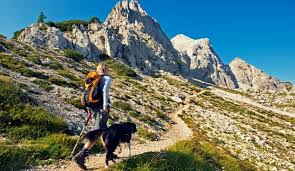
Image: active.com
Concurrently serving World Financial Group as a financial entrepreneur and Thatcher McGee’s Restaurant and Bar as head of security, Gettysburg College graduate Derek Weigel is an active member of the Sigma Alpha Epsilon fraternity Gettysburg chapter. When not working, Derek Weigel loves to hike with his dogs.
Regular dog walking helps improve bone and muscle strength and cardiovascular health while lowering blood cholesterol and stress. In addition to health benefits, dog walking provides social benefits to owners, according to research conducted by the University of Western Australia. The study revealed dog owners who hike with their pet are more likely to meet new people and socialize with others on the street.
Walking can help dogs prevent obesity, which is associated with other health complications, such as cardiovascular disease, osteoarthritis, insulin resistance, and liver disease. A few minutes out of the house also helps develop the dog’s social behavior and alleviates boredom.

